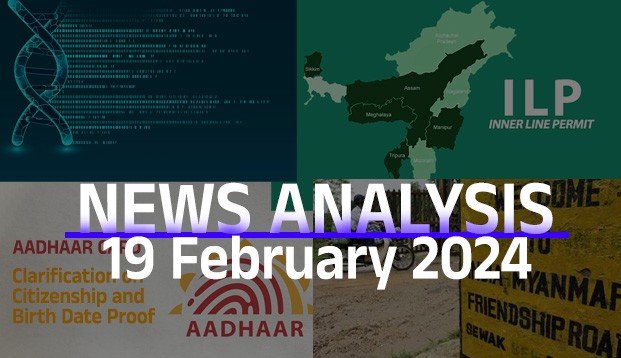19th February, 2024 (Monday)
| CONTENT LIST | ||
| Topics | Syllabus | |
| 1 | Aadhaar Card | GS. 2: Governance |
| 2 | Inner Line Permit (ILP) | GS.2: Indian Polity – Restriction to FRs |
| 3 | IPCC AR6 Synthesis Report | GS.1: Climatology – Reports in News |
| 4 | Line of Actual Control | GS.3: Security of India: Border Security |
| 5 | Genome sequencing | GS.3: Science & Technology |
| 6 | Free Movement Regime With Myanmar | GS.3: Security of India: Border Security |
AADHAAR CARD: Clarification on Citizenship and Birth Date Proof
Syllabus: GS.2: Governance: Government Initiatives in News
Why it’s in the News: To ease concerns over a recent directive to stop using Aadhaar as proof of date of birth, UIDAI plans to clarify soon that individuals can continue to use it for age verification after a risk assessment.
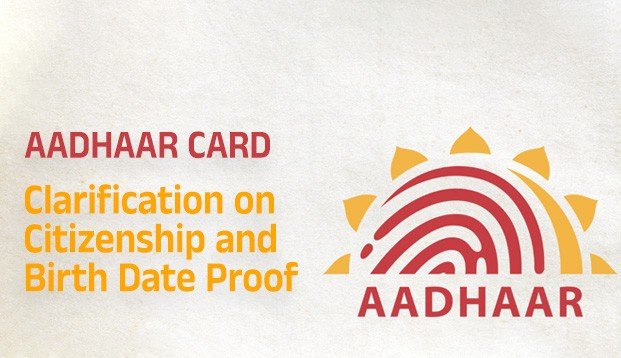

About Aadhaar Card:
- Aadhaar is a 12-digit unique identification number issued by the Unique Identification Authority of India (UIDAI) to every individual resident of India.
- The Aadhaar card serves as proof of identity and is valid anywhere in India for any identification purposes.
- Any individual, irrespective of age and gender, who is a resident of India, may voluntarily enroll to obtain Aadhaar number.
- As per the Aadhaar Act 2016, Indian citizens need to reside in the country for 182 days or more in the year preceding the date of enrolment.
- Minors, too, can apply for the Aadhaar Card. Children under the age of 5 will get the Blue Colour Aadhaar, which needs to get updated after they become 5 years old.
- The Aadhaar number is a proof of identity, however, it does not confer any right of citizenship or domicile in respect of an Aadhaar number holder.
- The Aadhaar number can be deactivated or omitted by the Issuing Authority in certain cases, such as if the enrollment is found to be false or if the biometric data do not match. Non-usage of Aadhaar for three consecutive years can lead to deactivation.
INNER LINE PERMIT (ILP)
Syllabus: GS.2: Indian Polity – Restriction to FRs
Why it’s in the News: Meghalaya’s Chief Minister Conrad Sangma reassures that the Citizenship (Amendment) Act (CAA) isn’t a concern for the state as most areas are under the Sixth Schedule, exempting them. Sangma stresses the need for the Inner Line Permit (ILP) regime to control outsider entry. He’s worried about the CAA’s potential spillover effects and has requested the Indian Government to maintain the ILP system in Meghalaya.
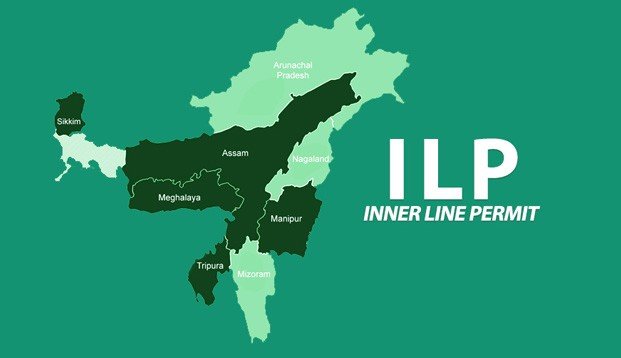

Introduction to ILP amid Citizenship Amendment Act:
- The concept of Inner Line Permit (ILP) has gained significance amid discussions on the Citizenship Amendment Act (CAA).
- Recently when the Citizenship (Amendment) Act 2019 came out, it exempted the areas coming under Inner Line Permit (ILP) as well as tribal areas of Assam, Meghalaya and Tripura (as included in the sixth schedule).
- Union Home Minister Amit Shah reassured Northeastern states about protection under CAA for regions where ILP is applicable, emphasizing its importance in states with autonomous administration under the Sixth Schedule.
Historical Context and Origin:
- Originating from the colonial era, the ILP system traces back to the Bengal Eastern Frontier Regulation Act of 1873.
- Initially aimed at safeguarding British commercial interests, the regulations restricted the entry and stay of outsiders in designated areas.
- Post-independence, the Indian government replaced “British subjects” with “Citizen of India,” addressing local concerns and safeguarding indigenous interests from inter-state migration.
Functionality and Implementation:
- An ILP is issued by the concerned state government and regulates the travel and stay of Indian citizens within specified areas.
- Applicants can obtain ILP either through online or physical application processes, detailing travel dates and permitted regions within the state.
Implications and Amendments:
- Amendments to the Meghalaya Residents Safety and Security Act, 2016, hint at rules akin to an ILP regime, yet the exact implications remain unspecified.
- While certain Northeastern states advocate for an ILP system’s implementation, concerns persist regarding its replication and enforceability across the region.
Regional Dynamics and Legislative Initiatives:
- Various Northeastern states, including Manipur and Assam, have witnessed legislative initiatives and public demands for ILP implementation.
- The Manipur People Bill, 2018, awaiting Presidential assent, imposes regulations on “outsiders” or “non-Manipuri people,” defining the state’s indigenous population with a 1951 cut-off year.
Current Advocacy and Public Response:
- Student organizations and youth groups, such as the North East Students’ Organisation and the Asom Jatiyatabadi Yuba Chatra Parishad, advocate for ILP introduction, emphasizing its necessity in protecting local interests amidst demographic shifts.
Conclusion:
- The discourse surrounding the Inner Line Permit (ILP) system intertwines historical legacies, regional autonomy, and contemporary legislative dynamics.
- As Northeastern states navigate the implications of the Citizenship Amendment Act and address concerns of demographic shifts, the ILP emerges as a pivotal mechanism to safeguard indigenous interests and regulate inter-state migration.
- The ongoing advocacy for ILP implementation underscores the complex interplay between identity, governance, and citizenship rights within the region.
IPCC AR6 SYNTHESIS REPORT
Syllabus: GS. 2: IR – India & Global Groupings
Why in News: The IPCC’s sixth assessment cycle (AR6) underscores the pressing need to limit global warming, signaling the initiation of the AR7 cycle with deliberations on report scheduling.
Intergovernmental Panel on Climate Change (IPCC)
- Established in 1988 by the World Meteorological Organization (WMO) and the United Nations Environment Programme (UNEP), the IPCC serves as a vital United Nations body.
- Its primary function is to compile reports assessing the state of climate change knowledge, including assessment reports, special reports, and methodology reports.
- These reports play a pivotal role in informing international negotiations aimed at addressing climate change.
- Operational Approach
- Unlike conducting scientific research, the IPCC synthesizes existing scientific literature on climate change to draw reasoned conclusions.
- Through its rigorous review process, the IPCC ensures that its reports represent the most comprehensive and authoritative assessment of climate science available.
The IPCC Synthesis Report (SYR)
- The Synthesis Report amalgamates key findings from the IPCC’s Sixth Assessment Report, drawing from three Working Groups (WGs) and several Special Reports.
- Key Findings of SYR
- Climate Change Realities
- Human activities have significantly raised global temperatures, causing extreme weather events, food insecurity, and disproportionate impacts on vulnerable populations.
- Future Projections
- Projections suggest a trajectory toward exceeding critical temperature thresholds, with irreversible changes in the climate system looming if emissions continue unabated.
- Climate Change Realities
- Implications for India
- Rising Sea Levels
- India faces substantial challenges due to rising sea levels, impacting its extensive coastline and necessitating robust adaptation measures.
- Rising Sea Levels
- Recommendations in the SYR
- Systemic Changes
- Urgent and comprehensive systemic changes are imperative, including transitioning to low-carbon economic systems and prioritizing climate-resilient development.
- Political Commitment and Equity
- Political commitment and equity are vital for enabling climate-resilient development, supported by technology transfer, capacity building, and equitable financing.
- Systemic Changes
- Way Forward for India
- Adaptation and Mitigation
- India must prioritize adaptation measures to minimize loss and damage while accelerating efforts to mitigate emissions through energy efficiency and renewable energy adoption.
- Adaptation and Mitigation
- Conclusion
- The IPCC’s Synthesis Report highlights the urgent need to tackle climate change and limit global warming.
- With rising sea levels posing significant challenges, proactive adaptation measures and systemic changes are essential, particularly for countries like India.
- By prioritizing climate-resilient development and fostering political commitment alongside equity, nations can pave the way towards a sustainable future.
- The report underscores the critical role of international cooperation in mitigating climate impacts and safeguarding our planet for future generations.
LINE OF ACTUAL CONTROL (LAC)
Syllabus: GS.3: Security of India: Border Security
Why it’s in the News: The Army has bolstered its combat capabilities along the Line of Actual Control (LAC) in Arunachal Pradesh, deploying a comprehensive range of weaponry, including the latest firearms and M777 ultra-light howitzers, following reinforcement efforts in the Tawang sector.
About the Line of Actual Control (LAC)
- Definition and Divisions
- The LAC delineates Indian-controlled territory from Chinese-controlled territory, divided into three sectors: eastern, middle, and western.
- India’s perception of the LAC differs from China’s, leading to discrepancies in its length and alignment.
- Contrast with Line of Control (LoC) with Pakistan
- The LoC, established in 1972, is a legally recognized boundary delineated on maps, unlike the LAC, which remains a contentious concept.
- Disputes and Historical Context
- Disagreements primarily stem from differing interpretations of historical agreements and actions, particularly evident in the western sector.
- India has consistently rejected China’s designation of the LAC, citing its arbitrary nature and historical context.
- Controversies in Ladakh
- Aksai Chin’s historical status and boundary ambiguity contribute to tensions, especially in Ladakh’s western region.
- Efforts to Resolve Differences
- Despite challenges, both nations have engaged in diplomatic efforts and agreements to manage border tensions, including the 1993 Agreement to Maintain Peace and Tranquility at the LAC.
- Recent disengagement efforts in eastern Ladakh demonstrate progress but also underscore the need for continued dialogue.
- Lingering Legacy Issues
- Persistent disputes, such as those in the Depsang Plains and Demchok, require ongoing attention and resolution to prevent escalation.
- Conclusion:
- While efforts to manage tensions along the LAC have seen some success, continued dialogue and proactive measures remain essential to address lingering disputes and maintain peace in the region.
GENOME SEQUENCING
Syllabus: GS. 3: Science & Technology
Why it’s in the News: Ancient DNA (aDNA) studies offer valuable insights into our ancestors’ genetic makeup, shedding light on their health, lifestyle, and tools. By analyzing DNA from skeletal remains, scientists uncover migration patterns, diseases, and dietary habits of ancient communities. Recent research uses aDNA to understand genetic diseases prevalent in ancient humans, revealing instances like Down’s syndrome and Turner syndrome.
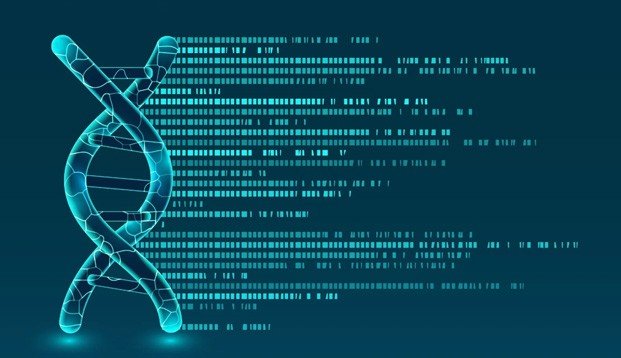

About Genome Sequencing
- The Human Genome:
- The human genome comprises the complete set of DNA found in the nucleus of every cell in the human body.
- It contains the genetic information essential for an organism’s development and function.
- The DNA is composed of adenine (A), cytosine (C), guanine (G), and thymine (T), forming approximately 3.05 billion base pairs.
- Genome Sequencing:
- Genome sequencing is the process of determining the precise order of base pairs within an organism’s DNA.
- This procedure unveils the unique genetic makeup of individuals.
- Next-generation sequencing (NGS) is a widely used method due to its speed, accuracy, and cost-effectiveness.
- Applications of Genome Sequencing
- Rare Disorder Evaluation
- Genome sequencing plays a crucial role in evaluating rare disorders and predispositions to diseases, including cancers.
- Numerous disorders stem from single gene mutations, such as cystic fibrosis and thalassemia.
- Prenatal Screening Tool
- It serves as a tool for prenatal screening, enabling the identification of genetic disorders or anomalies in fetuses.
- Technologies like CRISPR, relying on sequencing, hold promise for repairing disease-causing mutations.
- Public Health
- Genome sequencing has significant implications for public health, aiding in the surveillance and analysis of viral genomes.
- Notably, during the Ebola and COVID-19 outbreaks, sequencing facilitated the understanding of transmission pathways, vaccine development, and diagnostic tool creation.
- Population-Level Utilization
- By analyzing genomic profiles across populations, advanced analytics and AI can enhance our understanding of disease causation and potential treatments.
- This approach promises tailored healthcare solutions based on genetic diversity.
- Rare Disorder Evaluation
- The Human Genome Project (HGP)
- Initiated in 1990, the Human Genome Project aimed to map and sequences the entire human genome.
- The project culminated in 2023 with the release of the complete human genome, with a minimal error margin.
- This milestone paved the way for personalized genomic analysis, aiding in identifying genetic variations and their implications for health.
- About Genome India Project:
- The Genome India Project, sanctioned by the Department of Biotechnology, aims to create a comprehensive genetic database of the Indian population.
- By sequencing over 10,000 genomes from diverse Indian regions, the project seeks to establish a reference genome and explore unique genetic variants.
- Significance
- This initiative will unravel genetic variations specific to Indian populations, aiding in personalized medicine and disease management.
- Given India’s vast population diversity, understanding genetic predispositions is crucial for tackling prevalent diseases like diabetes, cardiovascular disorders, and cancer.
- Database for a Diverse Population
- With over 1.3 billion people and numerous endogamous population groups, India hosts a rich genetic diversity.
- Disease-causing mutations may be amplified within specific groups, necessitating a comprehensive genetic database tailored to India’s unique demographics.
Conclusion
- Genome sequencing revolutionizes healthcare by offering insights into individual genetic profiles and population-wide genetic variations.
- Projects like the Genome India initiative are pivotal for leveraging genetic data to enhance healthcare outcomes and address prevalent health challenges effectively.
FREE MOVEMENT REGIME WITH MYANMAR
Syllabus: GS. 3: Security of India: Border Security
Why it’s in the News: The editorial in ‘The Hindu’ criticizes the decision to scrap the “Free Movement Regime” between India and Myanmar, which facilitated trade and commerce across the border. It argues that the reasons given for the decision, such as concerns about narcotics trade and insurgent activity, are unconvincing. The opposition from states like Nagaland and Mizoram, which are providing humanitarian relief to refugees from Myanmar, underscores the importance of maintaining open borders. The editorial suggests that the decision reflects misplaced priorities and calls for reconsideration, emphasizing the need to prioritize positive relations with neighboring countries and address humanitarian concerns over security concerns.
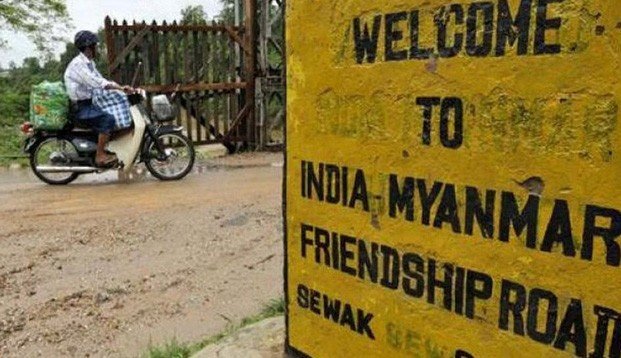

About the India-Myanmar Border
- Geographical Overview:
- The India-Myanmar border spans over 1600 km, encompassing both land and maritime boundaries in the Bay of Bengal.
- It shares borders with four North-Eastern states: Arunachal Pradesh, Nagaland, Manipur, and Mizoram.
- The relationship between India and Myanmar is characterized by shared heritage, including religious, linguistic, and ethnic ties.
- Free Movement Regime (FMR) Explained
- Mutually Agreed Arrangement: The Free Movement Regime (FMR) allows tribes residing within 16 km of the border on either side to travel without a visa.
- Implementation and Significance: Instituted in 2018 under the Act East policy, the FMR aims to strengthen bilateral ties. Its inception was delayed in 2017 due to the Rohingya refugee crisis.
- Historical Context: The British-drawn border in 1826 separated people of shared ethnicity and culture without their consent, necessitating measures like the FMR to bridge divides.
- Rationale Behind the FMR
- Ethnic and Familial Ties: Communities along the border have deep-seated familial and ethnic connections, transcending geopolitical boundaries. Instances like the border cutting through villages and even homes highlight the human aspect of the border issue.
- Economic Implications: The FMR not only facilitates people-to-people contact but also fuels local trade and commerce. Cross-border exchanges are crucial for sustaining livelihoods in the region, given the historical precedent of trans-border commerce.
- Conclusion:
- The India-Myanmar border, beyond its geopolitical significance, embodies the intertwined lives and cultures of border communities.
- Initiatives like the Free Movement Regime not only foster socio-economic ties but also symbolize the shared aspirations for peace and prosperity.
- As border security measures evolve, it’s imperative to balance security imperatives with the preservation of cross-border connectivity.
- Moving forward, a holistic approach that addresses both security concerns and community needs will be pivotal in securing and integrating the India-Myanmar border region.

